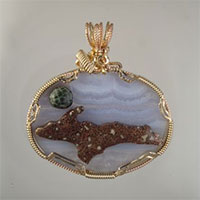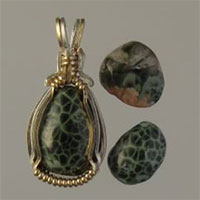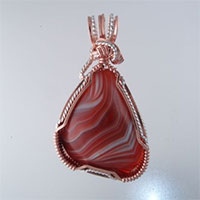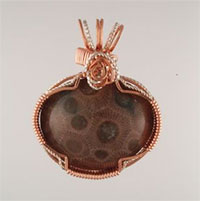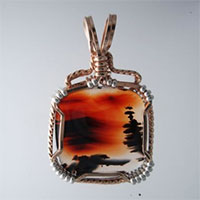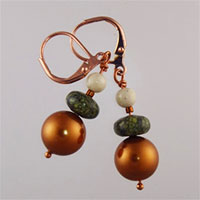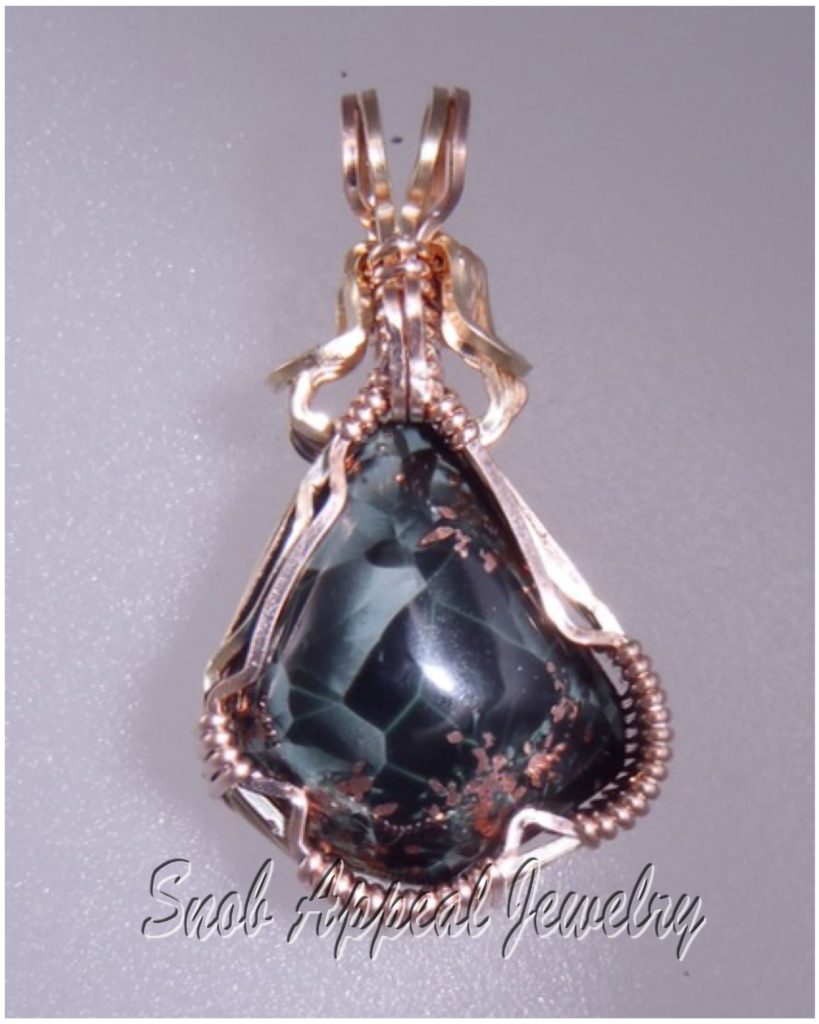
If you have followed my blogs over the years, you should have noticed many are about Isle Royale Greestones. I am amazed by orders from all over the country for cabochons, pendants, and earrings. How do these people know about these rare, one-source gemstones?
Many people have visited Isle Royale National Park, and know these stones can be found on the Island, but park regulations do not allow collecting Greenstone, as well as other specifically listed rocks and minerals. Having said this, the National Park Service policies have changed over the years in regards to picking up Greenstone. Isle Royale Greenstone have actually been protected since isle Royale National Park was estabished in April of 1940. There are individuals, even today, that harvest a few Greenstones while visiting Isle Royale. I guess my personal feeling is neutral on this subject, but they could pay a price if caught.
The Park service looked the other way, back in the day, when visitors picked up a few Greenstones on the beaches. Tiny little Greenstone, although fairly tough, were eventually ground up by the mighty Lake Superior, so why not let a few go home as mementos. The problem came with commercial Greenstone expeditions, where thousands of Greenstone were harvested by divers or “professional pickers”, and sold on the mainland for massive profit. The park service cracked down on these greedy private business collectors, and began enforcing the collecting rules that were always on the books. Today, there is a strict and enforced policy against removal of certain Gemstones and Copper from Isle Royale.
Over the years, I often have conversations with customers about old rock collections from decades ago. The collections are sometimes discovered by heirs in basements, garages, or sheds. My ears perk up at the sound of “grandpa’s old rocks”. Last year I bought an old Greenstone collection that was stored in a barn for fifty years, the rockhound that collected them was remembered by the jewelry he made, but some stones remained.
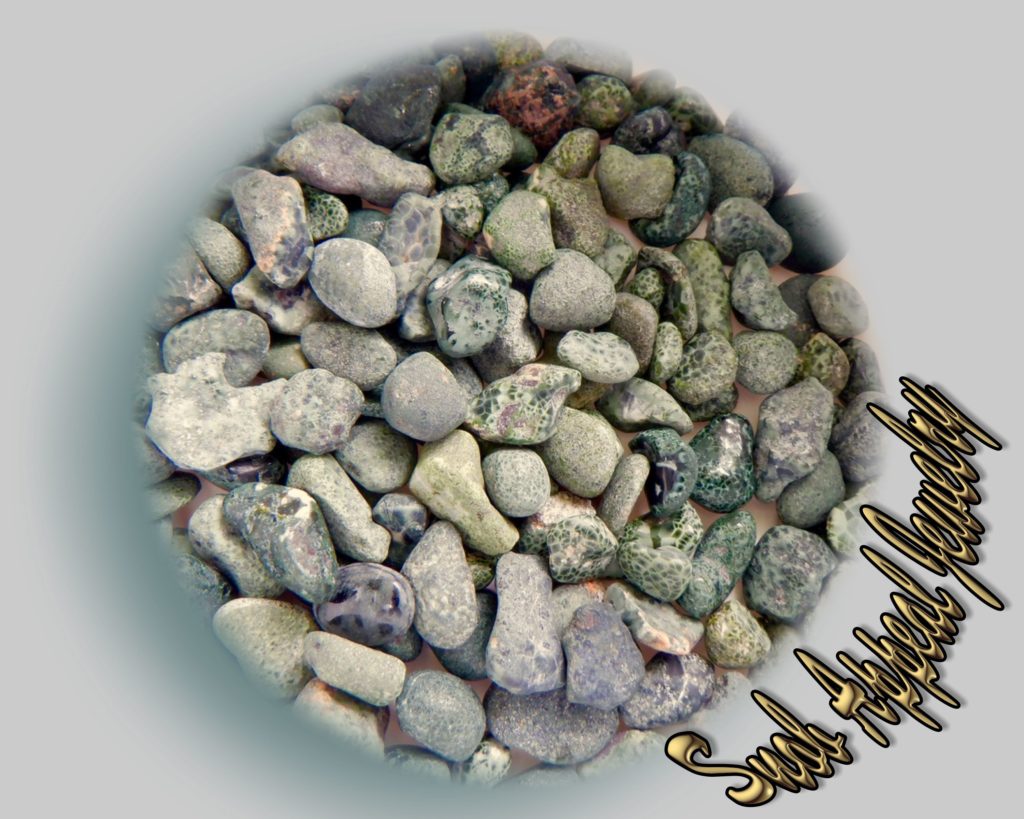
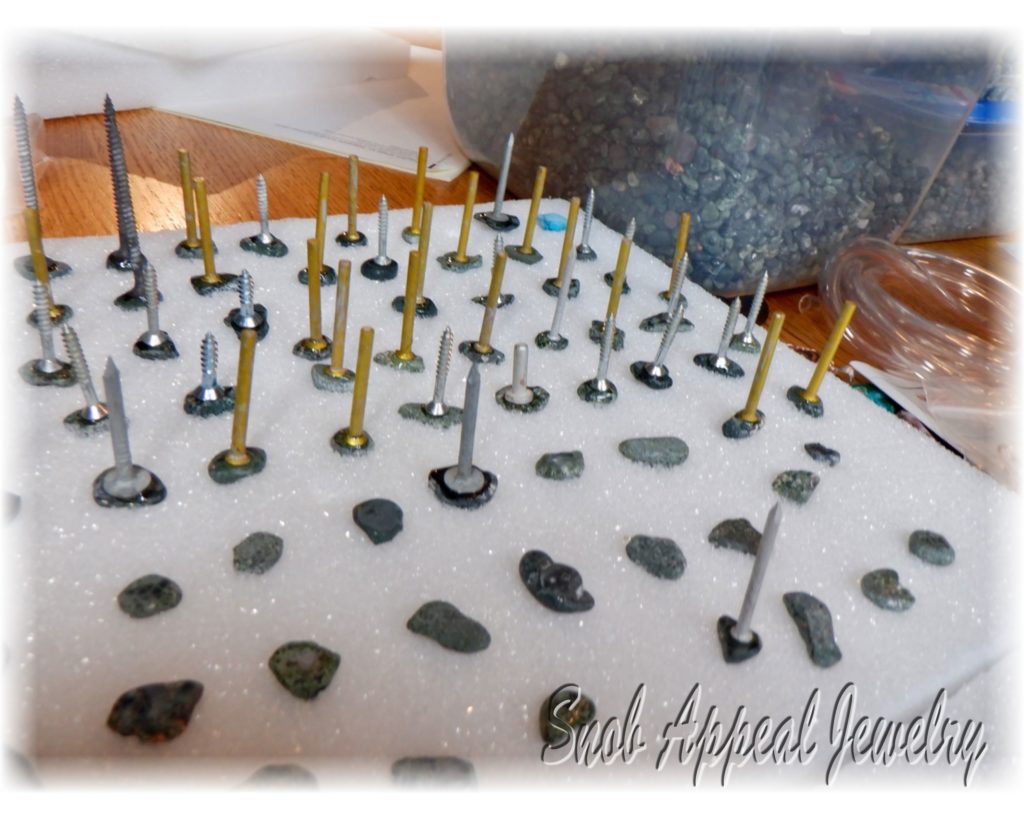
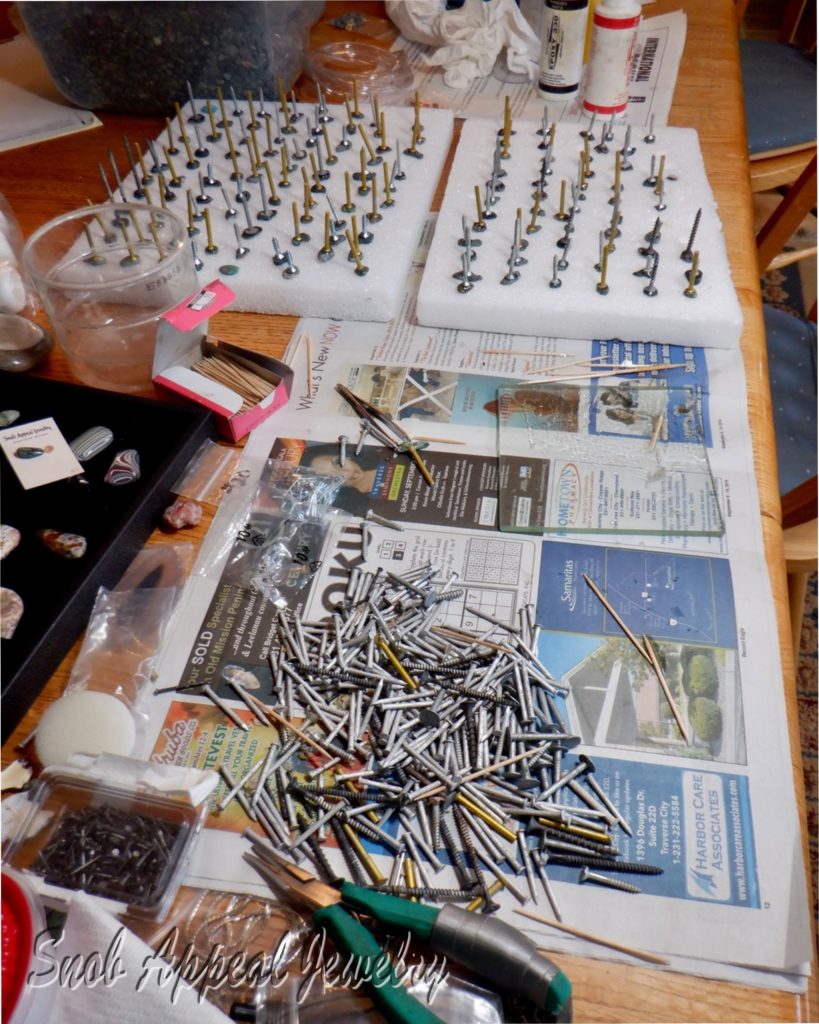
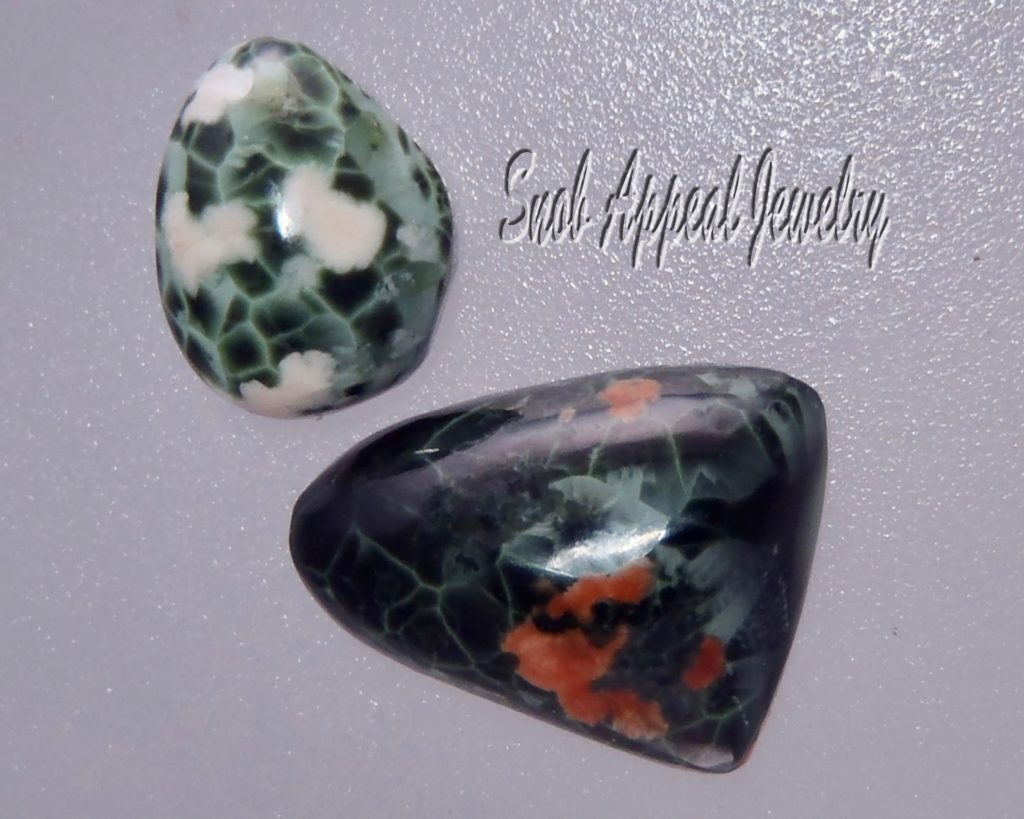
Finishing Isle Royale Greenstones
Whenever the urge presents itself, or my inventory depletes, I decide to have a Greenstone production week. Production usually involves sorting out stones for both pendants and earrings. Earrings are generally sorted for color, size, and quality AFTER the Stones have been dopped, cut and polished, and removed from the dopsticks.
Depending on the size, pendant stones may or may not need to be dopped. Dopping involves gluing or hot waxing a stone to a wooden stick, a nail or a screw, to allow safe cutting without the skin touching the diamond imbedded wheels of the Lapidary Machine. Some bleeding is often present even though the stones are Dopped. I tell Bonnie, that a little blood on the stone improves the polish (NOT). I do heal fast. Some of my cutting and polishing of Greenstone methods I keep under wraps, but standard methods work well for most. I may continue, starting with how I remove the stones from the Dopsticks, and proceed from there.
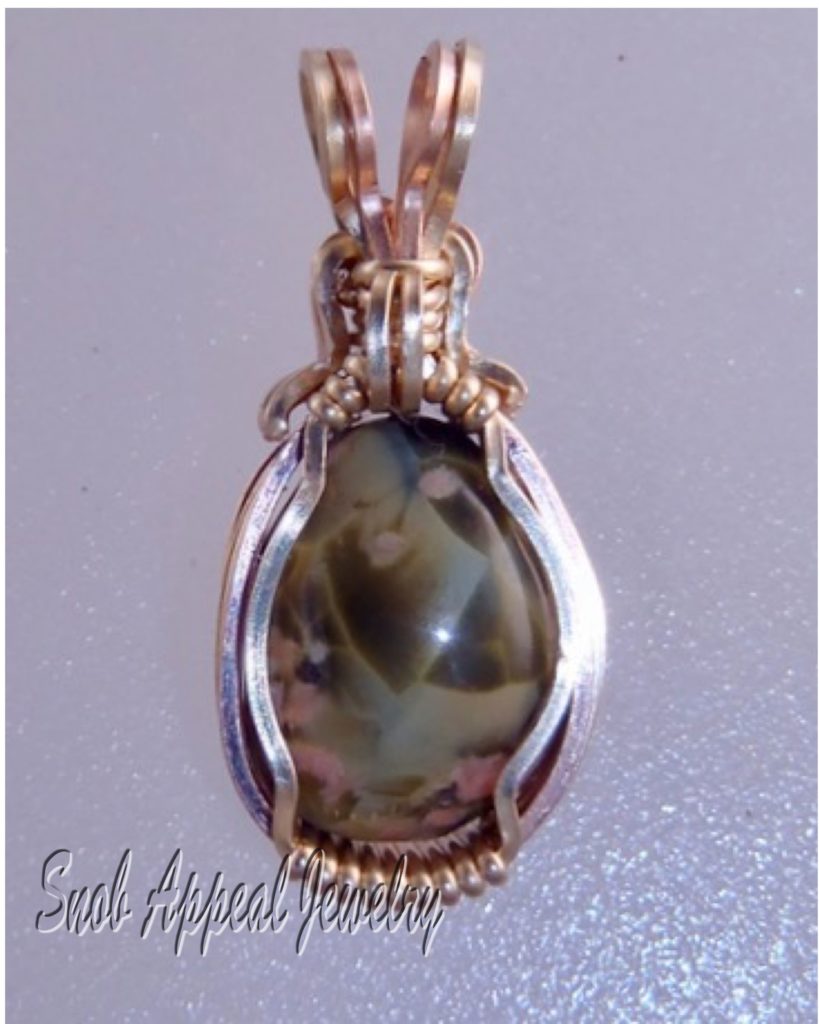
Greenstone Quality
Island Stones are usually superior to Keweenaw stones in all respects. They generally harder and the pattern goes completely through the stone. The pattern most often, is a finer pattern, and often the color is a pale sage green. Because of the hardness of the Island material, Isle Royale Greenstone take a super deluxe polish. You can read more about the colors and inclusions in Greenstone in the Snob Blog article, The Shades and Patterns of Greenstone (Chlorastrolite).
Island Stones make wonderful stud earrings due to the fine pattern that is usually present. Isle Royale stones cost a little more money, but are lovely.
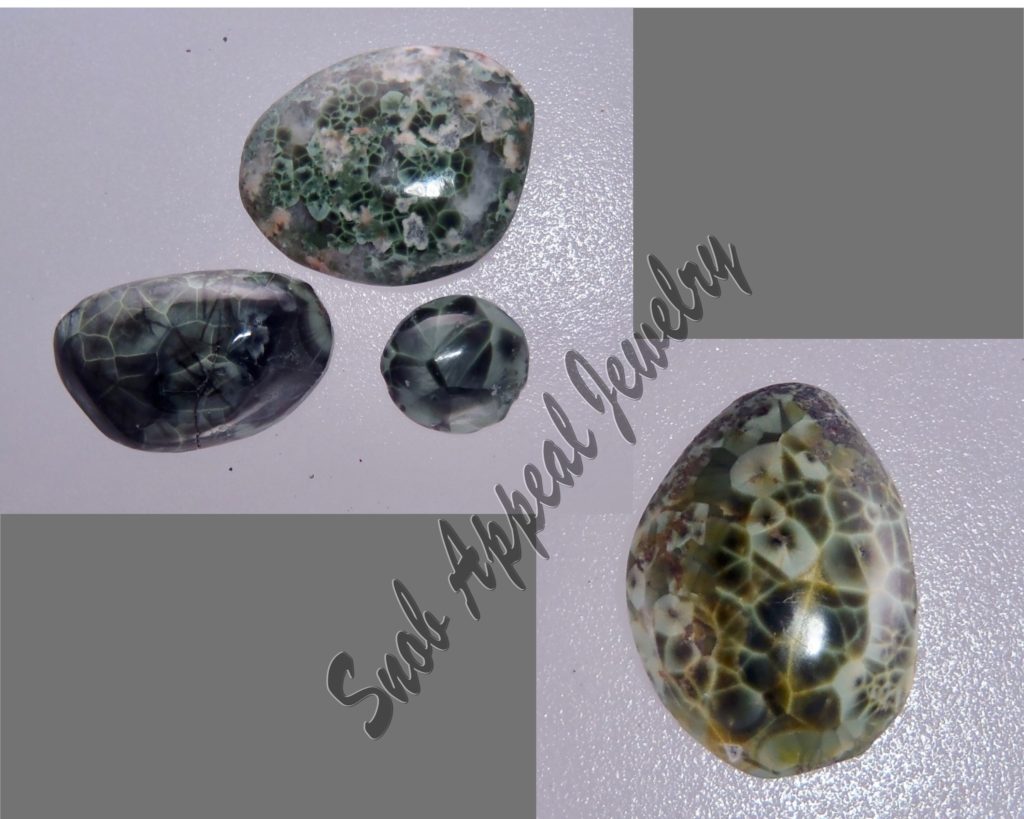
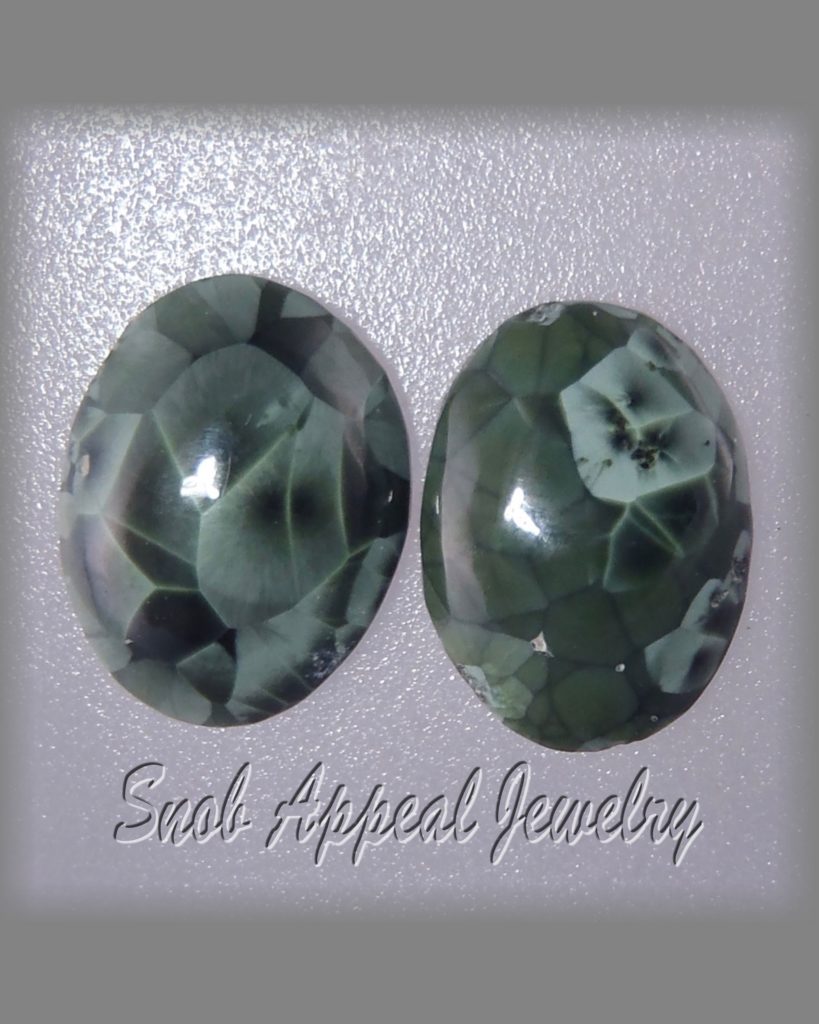
Another phenomena of Island stones is their color variations; some are so unusual you can have doubts that they are actually Chlorastrolite.
We invite you to have a closer look at our Greenstone–check out our wide selection of cabochons, pendants, and earrings.


